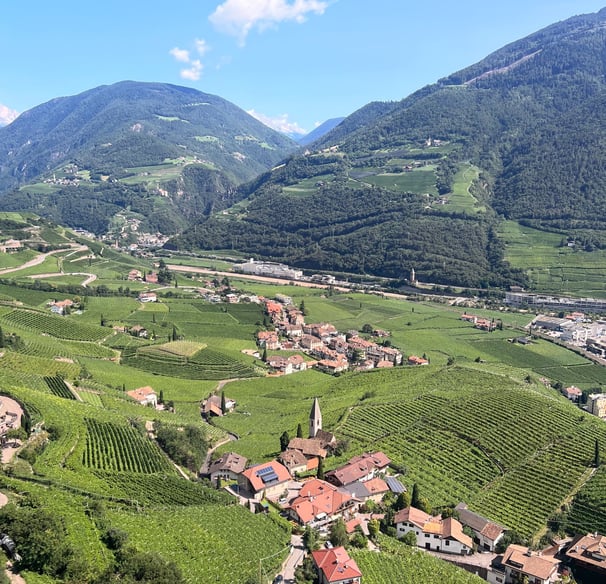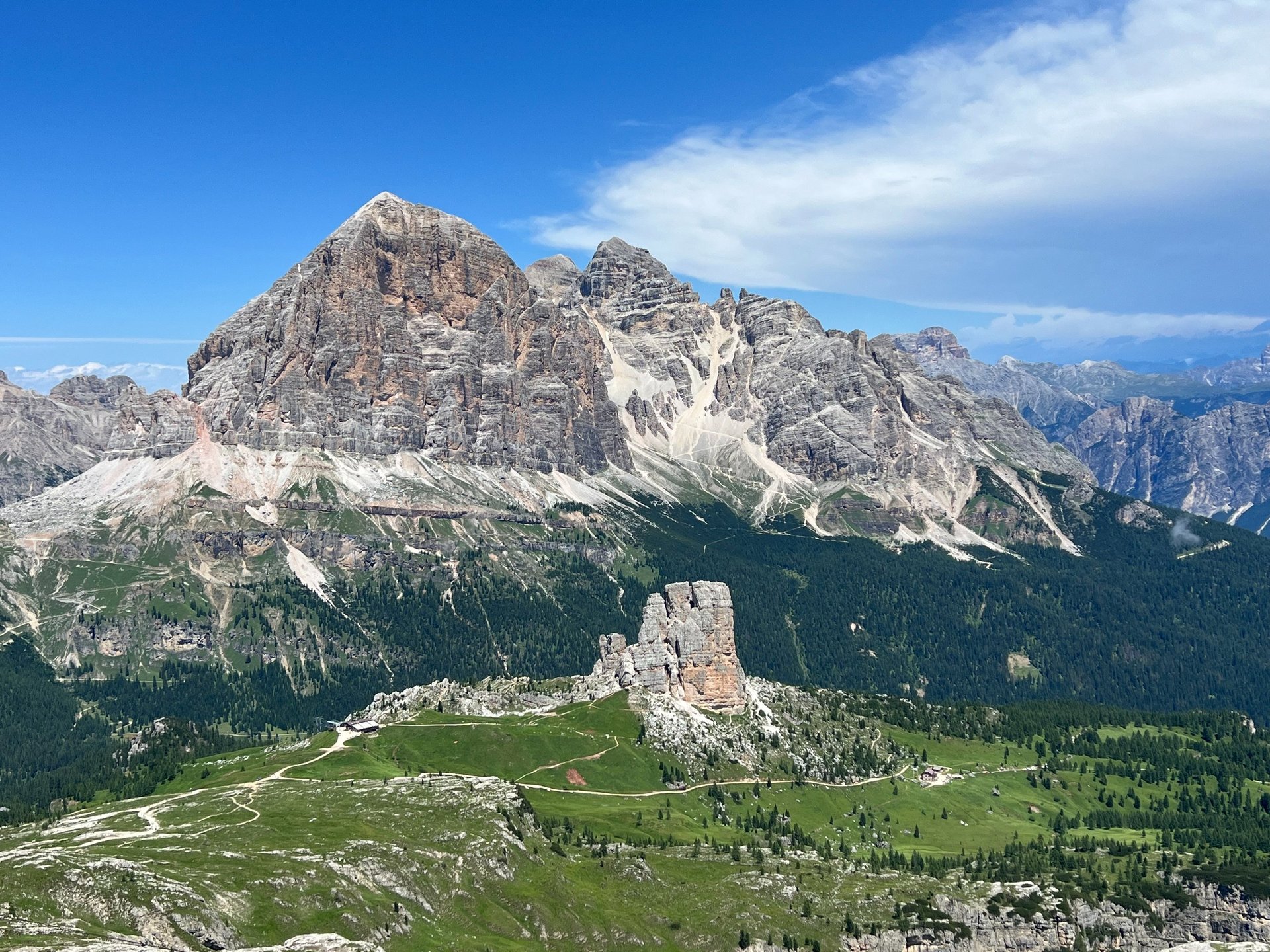
The Dolomites
(Northeastern Italy)
General info
This striking mountain range in the northeastern corner of Italy is part of the Southern Limestone Alps- a subsection of the largest mountain range in Europe ("the Alps"). The Dolomites cover a surface area of 6,155 square miles with the highest peak being Marmolada at just under 11,000 feet. This mountain range takes its name from the carbonite rock composite that is mainly composed of the aptly named mineral- dolomite.
The Dolomites span throughout seven provinces within Italy and have eight natural parks and one national park. The Dolomites were declared as a UNESCO World Heritage Site in 2009 offering further protection of this incredible landscape.
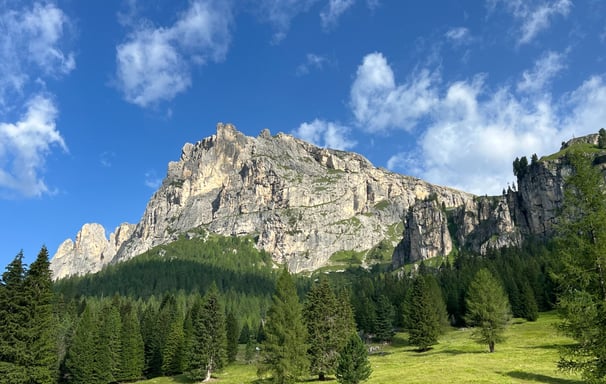

Climate
This alpine environment is characterized by harsh winters especially at higher elevations. The summer is more stable with far less precipitation and mainly sunny weather. The coldest month is January with an average high temperature of 20 degrees Fahrenheit while the warmest month is July with an average high temperature of 60 degrees Fahrenheit. During the winter months, the Dolomites will be mainly covered in snow and wind chills can be bitterly cold. In the summer months, although drier weather is usually the norm, thunderstorms can develop quickly- especially in August. In the Springtime (April-May) the valleys begin to turn green and wildflowers bloom while in Autumn (late September-October), you can witness the delightful color change of the leaves.
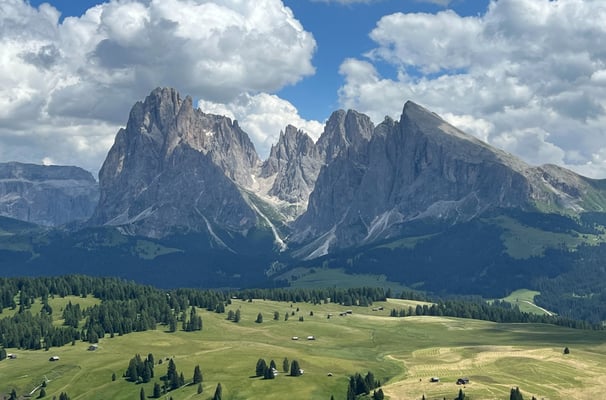

Geography & Geology
Bordering on Austria to the north and the Venetian plains to the south, the Dolomites are along the eastern stretches of the prominent European Alps- the largest mountain range in Europe. Some of the most notable peaks in this the Dolomites are Tre Cime, Cinque Torri, Sassolungo, Tofane, and Sella.
Research points to an age of roughly 250 million years as the origin of these incredible mountains. The major impetus for the formation of the mountains was most likely the collision of the African and European tectonic plates. The composition of these mountains is mainly a sedimentary rock very similar to limestone, but one that does not react to acids. Naturalist Richard Kirman eventually named this mineral "Dolomite". Previously, they were rereferred to as the "Pale Mountains".
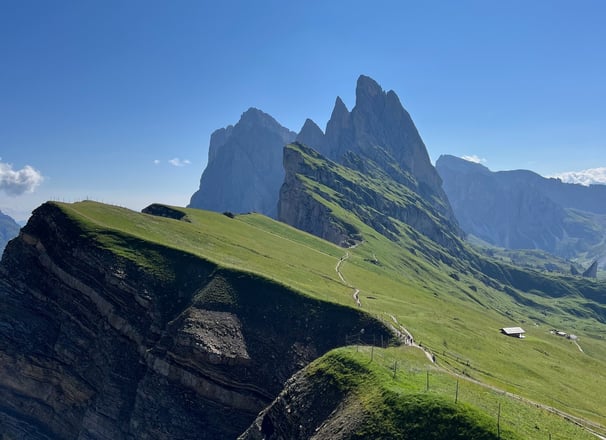

History - World War I
In the beginning of WWI, the Trento, Tyrol, and Veneto regions of the Dolomites were controlled by the Austro-Hungarian Empire. By 1915, Italy declared war on the Austro-Hungarian Empire fighting for the annexation of these territories. This lead to gruesome trench warfare among the mountains of the Dolomites. To this day, you can visit "open-air World War I museums" in some of the most notable areas of the Dolomites including Cinque Torri and Sasso di Stria. Record has it that the winter of 1915/1916 was one of the coldest and snowiest on record with more soldiers being buried by avalanches and killed by the brutal natural elements than from actual warfare. By the end of WW1 in 1918, South Tyrol & Trento were annexed and became part of the Kingdom of Italy after being under the rule of the Austro-Hungarian Empire for nearly 1,000 years.
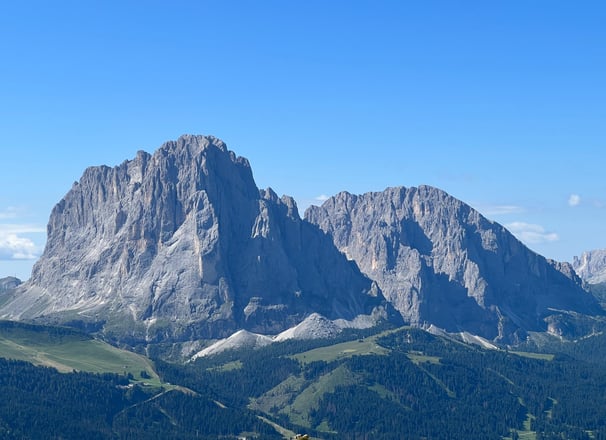

Sport
The Dolomites have become a major destination for outdoor adventurers and competitive athletes from all over the world. Notable for its climbing, cycling, hiking, rafting, and skiing, the Dolomites have a fascinating history of mountaineering as many pioneers in the sport have traversed these craggy peaks. The Dolomites are considered a prominent European destination for cycling and mountain biking with dozens of tournaments being held here and two famous cycling events each year with nearly 30,000 participants. The Dolomites has 12 world-class ski resorts- Alta Badia, Cortina d'Ampezzo, and Val Gardena are the most popular. The alluring and classy mountain town of Cortina d'Ampezzo was the host of the Winter Olympics in 1956 and will be once again in 2026.
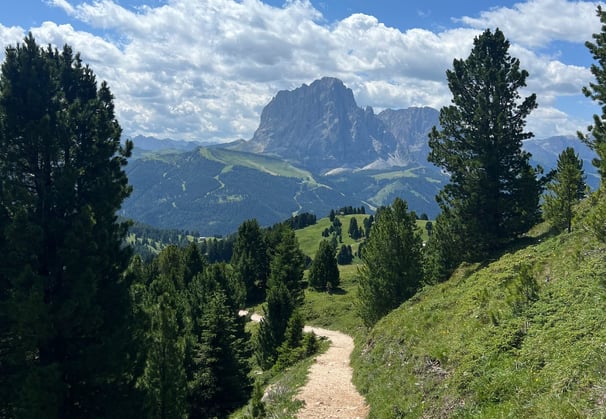

Tourism
Given their year-round opportunities for sport and their widely held consideration as one of the most beautiful mountain ranges in the world, the Dolomites have become increasingly popular seeing 34 million visitors in 2022. Especially with their 2009 designation as a UNESCO World Heritage Site, intriguing history, and being named as the host for the upcoming Winter Olympics in 2026, the Dolomites are certainly not a secret. The Dolomites first began to increase in popularity in the late 19th century when mountaineers began to arrive to the valleys. By 1870, hotel accommodations and train connections began to expand, and soon after upper class English families started travelling here. By the early 1900s the Dolomites were gaining notoriety as a major climbing destination and by 1947, thanks to famous alpinist and guide Franz Kostner, the first chair lift was built. This engineering feat soon after spurred much more development of high powered lifts that lead to the formation of the ski resorts here today. In 1956, the Winter Olympics hosted in Cortina d'Ampezzo was the first ever broadcasted on live television giving further visibility to the region.
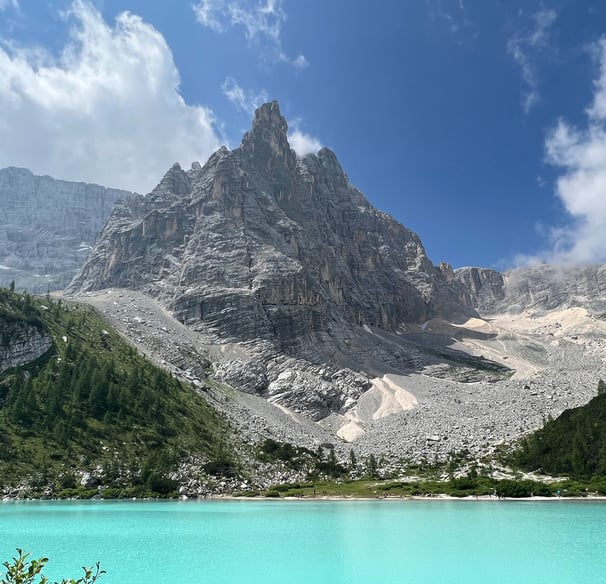

Tyrolean culture
The South-Tyrol province (western valleys of the Dolomites) has a fascinating culture. For nearly 1,000 years this region was part of the Austro-Hungarian Empire until being annexed at the end of World War I becoming part of the Italy. To this day, there is still a very unique culture here in which three languages are spoken- German, Italian, and Ladin. With the rise of fascism in Italy, this region fought for autonomy which was granted in 1948. Today, South Tyrol is officially named the Autonomous Province of Bolzano- one of two that makes up a larger autonomous zone (Trentino) in northern Italy. Even today, German is the most widely spoken language at 62%. Italian is spoken by 23% of the inhabitants and Ladin spoken by 4% of inhabitants. The province has a certain degree of self government with a range of legislative and executive powers. South Tyrol also maintains its own financial regime allowing it to maintain 90% of its revenue. South Tyrol is the wealthiest province in Italy and one of the wealthiest provinces in Europe. Val Gardena is the largest draw for this region with its year round recreational activities. Bolzano is also worth visiting.
